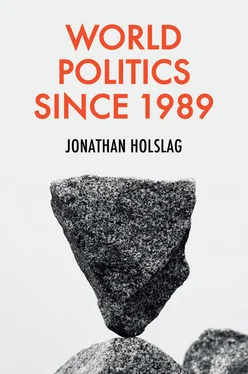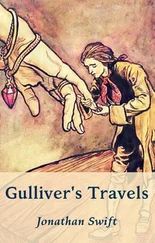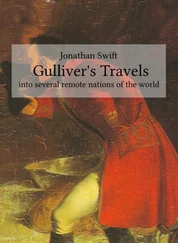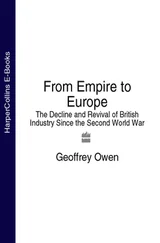11 Watershed Gathering forces 2021 Charles V Notes
12 Acknowledgements
13 Further reading
14 Index
15 End User License Agreement
1 Cover
2 Table of Contents
3 Endorsement Page
4 Title Page
5 Copyright
6 Dedication
7 The pendulum THE PENDULUM W ALLPECKERS, THEY WERE CALLED. IN THE WINTER OF 1989, hundreds of wallpeckers or Mauerspechte descended on the Berlin Wall. Armed with hammers and chisels, they attacked the imposing barrier of concrete and barbed wire. One year later, the entire Iron Curtain between the Soviet Union and the West came down. It was an electric moment. “A second heart implanted,” wrote a student in her diary, “can’t breathe any more.” 1 From then onwards, the world experienced a period of opening up, of fading political fault lines, diminishing travel restrictions, and lowering barriers against trade. This was the age of globalization, of growing connectivity, commerce, and prosperity, growth that came with the expectation that the remaining vestiges of authoritarianism would make place for freedom. The high tide of globalization appeared to hold opportunities for all. 2 Emerging powers like South Korea, China, and Vietnam received access to the technology, capital, and consumer markets of rich societies, like the United States, Western Europe, and Japan. Rich citizens benefited from cheap goods, from toys to mobile phones, and specialized into services. Countries in Africa, Latin America, and the Middle East profited from growing raw material exports and investment. Trade propelled specialization between nations and specialization brought more growth to all. It was called a great convergence. 3 There were still threats, to be sure. But these threats were expected to make countries work together. Terrorism, for example, pirates that targeted global shipping, criminals that penetrated digital networks – or pandemics. Experts spoke of security interdependence, of global common goods requiring a common policy. 4 A teenager asked to name the most urgent challenge facing the world would likely mention pollution or climate change. If there was competition, it would be a peaceful contest for connectivity, conducted by multinationals and start-up companies instead of states and soldiers. Container ships not aircraft carriers shaped the fortune of the major powers. Cheap airlines made city trips affordable. Internet traffic exploded. Global economic production grew. Extreme poverty retreated. Magazines wrote about a renaissance in Africa. 5 “China’s arrival has improved Africa’s infrastructure and boosted its manufacturing sector,” a magazine trumpeted. “Africa’s enthusiasm for technology is boosting growth.” 6 India with its hundreds of millions of paupers was set to shine. Globalization augured a golden era – or at least an exit from an era of iron.
8 Begin Reading
9 Watershed
10 Acknowledgements
11 Further reading
12 Index
13 End User License Agreement
1 Chapter 1 Figure 1.1.World development indicators Figure 1.2.Selected growth indicators for the West Figure 1.3.The evolution of the net international investment position Figure 1.4.Share of authoritarian countries in total imports of EU and US Figure 1.5.Economic and political globalization Figure 1.6.Accumulated length of border fences and walls Figure 1.7.People living below US$5.2 PPP per day Figure 1.8.People employed as share of people between 15 and 64 years old Figure 1.9.Deaths caused by homicide, armed conflicts, and terrorism Figure 1.10.Number of armed conflicts and forcibly displaced people Figure 1.11.Global military spending Figure 1.12.Fueling economic growth Figure 1.13.Global US$ of GDP per kg of transport Figure 1.14.GDP per kg plastic waste
2 Chapter 2 Figure 2.1.The purpose of studying among American university students 4.1. The detaching of…
3 Chapter 7 Figure 7.1.Growth of household income Figure 7.2.Trust in government Figure 7.3.“EU membership is a good thing for my country”
4 Chapter 8 Figure 8.1.Lenders and borrowers
5 Chapter 9 Figure 9.1.The share of China, India, and Japan in Asia’s total GDP Figure 9.2.Africa’s commodity trap 11.1. Middle East fuel exports
6 Chapter 13 Figure 13.1.The strength of the rising powers
1 Chapter 2 Map 2.1.America’s world
2 Chapter 3 Map 3.1.The Soviet sphere Map 3.2.The China sphere
1 Chapter 1 Table 1.1.Basic indicators of Western power
1 a
2 iii
3 iv
4 vii
5 1
6 2
7 3
8 4
9 5
10 6
11 7
12 8
13 9
14 10
15 11
16 12
17 13
18 14
19 15
20 16
21 17
22 18
23 19
24 21
25 23
26 24
27 25
28 26
29 27
30 28
31 29
32 30
33 31
34 32
35 33
36 34
37 35
38 36
39 37
40 38
41 39
42 40
43 41
44 42
45 43
46 44
47 45
48 46
49 47
50 48
51 49
52 50
53 51
54 52
55 53
56 54
57 55
58 56
59 57
60 58
61 59
62 60
63 61
64 62
65 63
66 64
67 65
68 66
69 67
70 68
71 69
72 70
73 71
74 72
75 73
76 74
77 75
78 76
79 77
80 78
81 79
82 80
83 81
84 82
85 83
86 84
87 85
88 86
89 87
90 89
91 91
92 92
93 93
94 94
95 95
96 96
97 97
98 98
99 99
100 100
101 101
102 102
103 103
104 104
105 105
106 106
107 107
108 108
109 109
110 110
111 111
112 112
113 113
114 114
115 115
116 116
117 117
118 118
119 119
120 120
121 121
122 122
123 123
124 124
125 125
126 126
127 127
128 128
129 129
130 130
131 131
132 132
133 133
134 134
135 135
136 136
137 137
138 138
139 139
140 140
141 141
142 143
143 144
144 145
145 146
146 147
147 148
148 149
149 150
150 151
151 152
152 153
153 154
154 155
155 156
156 157
157 158
158 159
159 160
160 161
161 162
162 163
163 164
164 165
165 166
166 167
167 168
168 169
169 170
170 171
171 172
172 173
173 174
174 175
175 176
176 177
177 178
178 179
179 180
180 181
181 182
182 183
183 184
184 185
185 186
186 187
187 188
188 189
189 190
190 191
191 192
192 193
193 194
194 195
195 196
196 197
197 198
198 199
199 200
200 201
201 202
202 203
203 204
204 205
205 206
206 207
207 208
208 209
209 210
210 211
Читать дальше

![Деннис Лихэйн - Когда под ногами бездна [Since We Fell ru]](/books/25722/dennis-lihejn-kogda-pod-nogami-bezdna-since-we-fe-thumb.webp)










